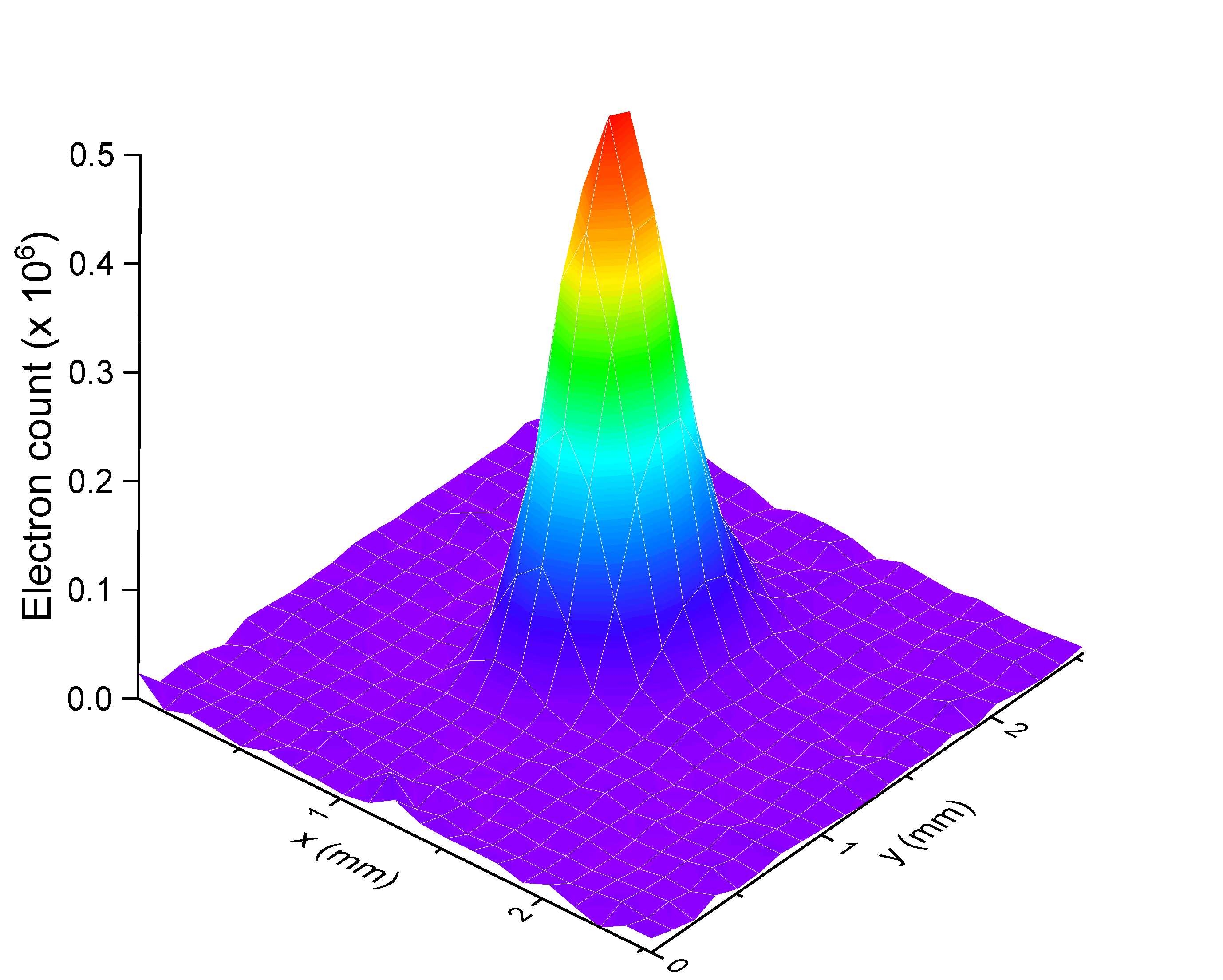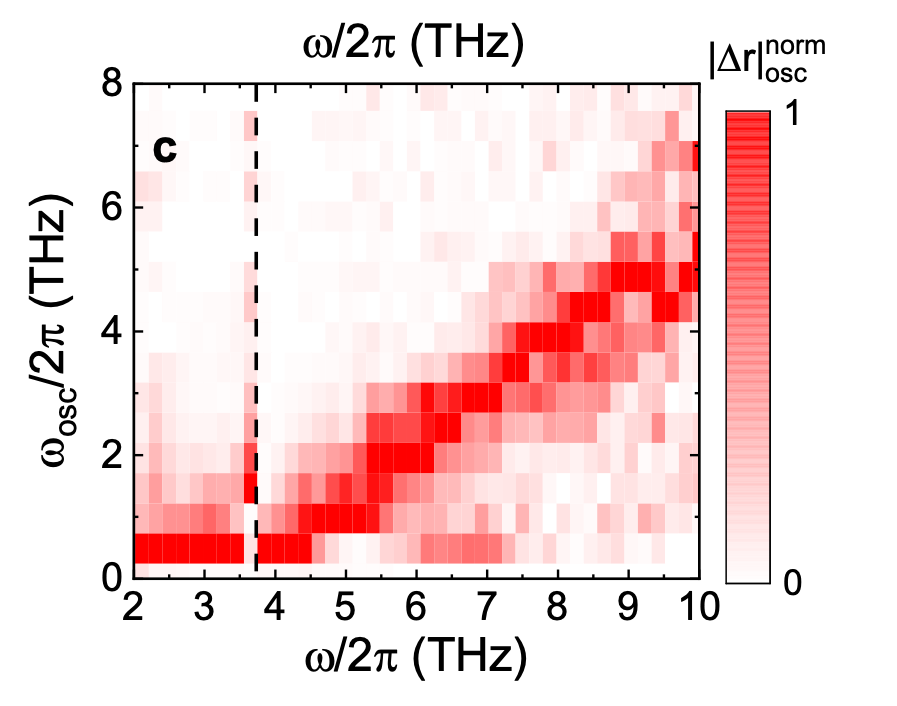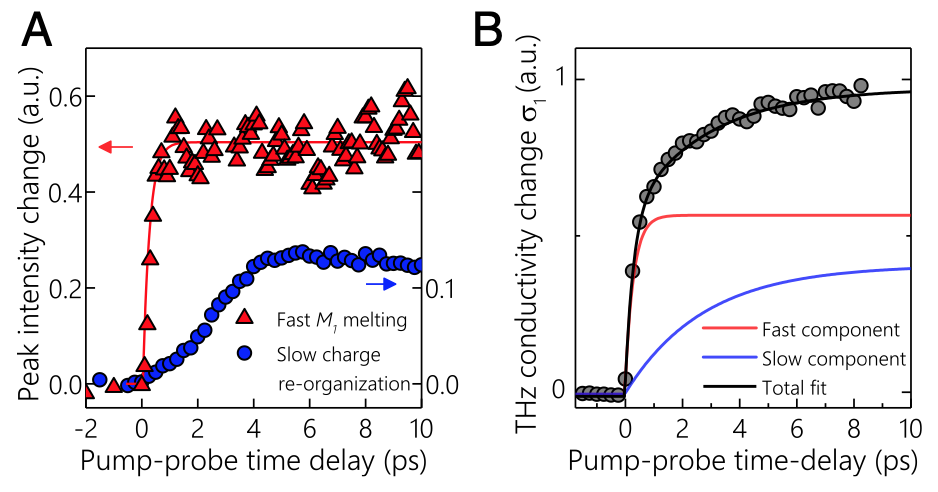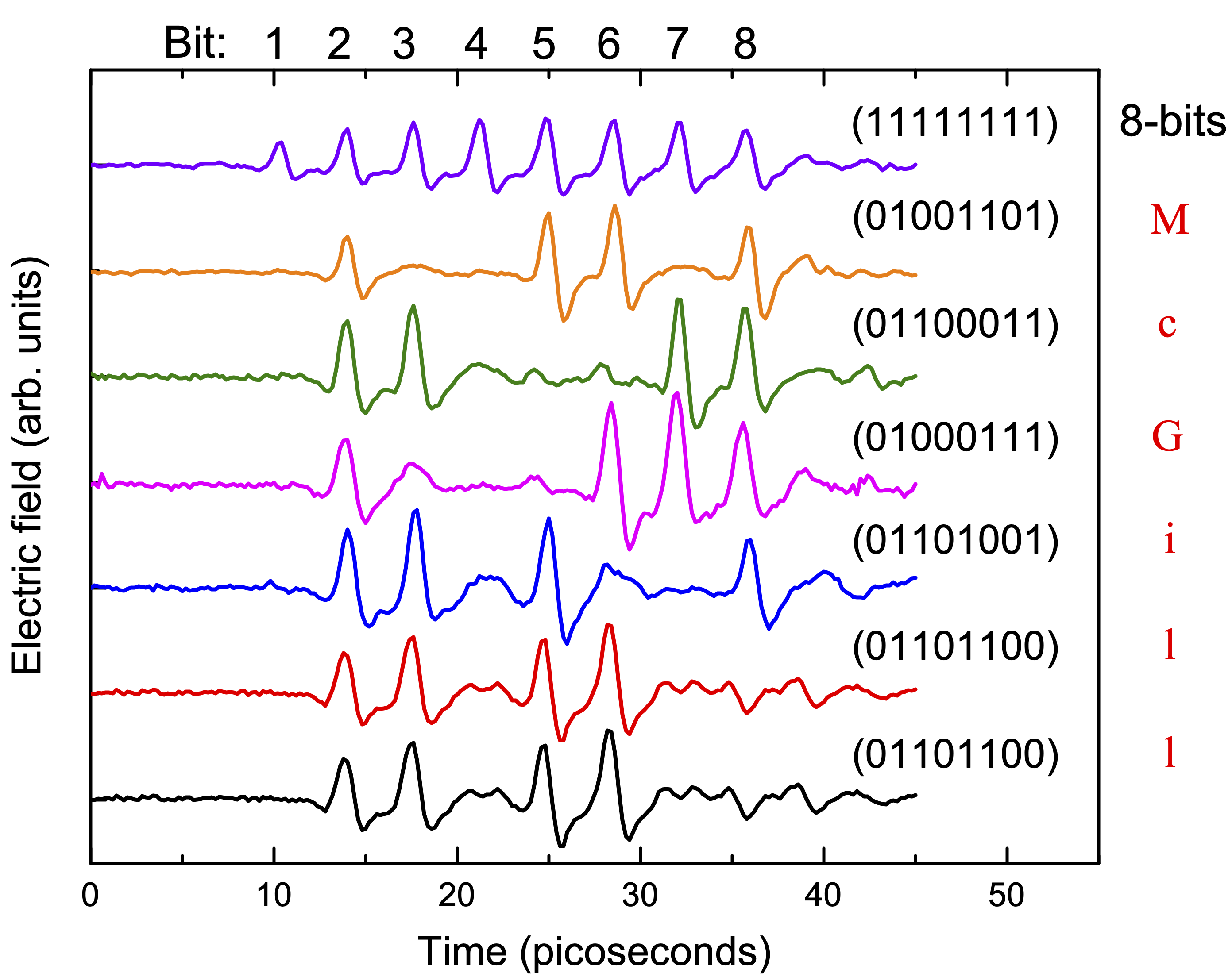
Recent publications

High bunch charge emission of electrons using THz driven metal nanotips
Electrons can be pulled from metallic surfaces using photon energies smaller than the work function if the light field is strong enough. In this work, we use the near-field enhancement at the apex of a nanotip to reach fields > 40 GV/m, tilting the potential such that electrons can tunnel directly from the Fermi surface. We show large bunch charges in excess of 10 6 electrons, which are accelerated from rest to kilo-electronVolts in about 10 fs. This is an equivalent acceleration of about 10 22 m/s 2 ! Link to the paper on the arXiv.

Intra-band signatures of large polarons in the lead halide perovskites.
Using time-resolved terahertz spectroscopy, we observed the internal motion of an electron and a coupled lattice vibration, called a polaron. The intra-band conductivity of a polaron is revealed in a linear beat signal between the drive frequency and the observed coherent oscillation. This measurement is a clear indication that charges move as intermediate sized polarons in the lead halide perovskites. Published in Science Advances.

Tracking structural and electronic phase changes in the correlated electron material vanadium dioxide with UED/TRTS combo
In collaboration with Prof. Brad Siwick and his team here at McGill, we combined our time-resolved THz spectroscopy with their ultrafast electron diffraction in the correlated electron system vanadium dioxide. These two powerful techniques allow structural and electronic transport dynamics to be measured simultaneously on sub-picosecond time scales under identical conditions. We apply these to observe the relative contributions of structural phases to the multi-phase character of the photoinduced insulator-to-metal transition. Published in PNAS.

Arbitrary pulse sequences for THz light
Using a specialized waveguide developed by our group, we demonstrate a method to synthesize any THz pulse sequence given a single input THz pulse. Above you see ‘McGill’ written in 8-bit ASCII with on-off keying on a THz pulse train. This is a major step towards a new, powerful form of multi-pulse THz spectroscopy. Published in Optica.